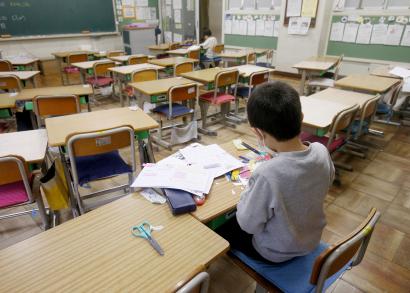
Millions more children in the U.S. learned Friday that they're unlikely to return to classrooms full time in the fall because of the coronavirus pandemic as death tolls reached new highs.
It came as many states — particularly in the Sunbelt — struggled to cope with the surge and governments worldwide tried to control fresh outbreaks. In a sign of how the virus is galloping around the globe, the World Health Organization reported nearly a quarter-million new infections in a single day.
In the U.S., teams of military medics were deployed in Texas and California to help hospitals deluged by coronavirus patients. The two most populous states each reported roughly 10,000 new cases and some of their highest death counts since the pandemic began. Big numbers in Florida, Arizona and other states also are helping drive the U.S. resurgence that's forcing states to rethink the school year.
California Gov. Gavin Newsom laid out strict criteria for school reopenings that makes classroom instruction unlikely for most districts. The Democrat's rules mandate that students above second grade and all staff wear masks.
Texas gave public schools permission to stay closed for more than 5 million students well into the fall. Under the guidelines, schools can hold online-only instruction for up to the first eight weeks, potentially pushing a return to campus in some cities until November.
Most Chicago children would return to the classroom just two days a week and spend the other three days learning remotely under a tentative plan outlined by officials from the nation’s third-largest school district. A final decision for fall classes for the district’s more than 300,000 students won’t come until late August.
Iowa Gov. Kim Reynolds, a Republican, announced she will override school districts and require students to spend at least half of their schooling in classrooms, drawing criticism from the state teachers union.
The uncertainty about the way to safely restart schools has parents like Ivette Garcia of Orange Park, Florida, struggling with what to do. When she learned her school district only had two options this fall, in-person or virtual lessons, she decided to keep her kindergarten son home. She plans to schedule instruction before and after work, with her parents reinforcing education in between.
Several states have been reporting record numbers of COVID-19 this week, contributing to a surge in the national death rate. The seven-day rolling average for daily new deaths has risen 34% from two weeks ago, while the case count in that period shot up 43%.
Texas reported a record 174 new deaths, and more than 10,000 additional cases for the fourth consecutive day. California's nearly 10,000 confirmed cases were its third-highest daily total, and it recorded 130 deaths during a week of seesawing infection numbers.
Florida reported 128 new deaths Friday and 11,345 additional cases.
There were signs across the Sunbelt that the virus was stretching authorities' capacity to respond. The medical examiner’s office in metro Phoenix has gotten portable storage coolers and ordered more to handle an influx of bodies — reminiscent of New York City at the height of the pandemic there.
In Houston, an 86-person Army medical team worked to take over a wing of United Memorial Medical Center. In California, military doctors, nurses and other health care specialists were being deployed to eight hospitals facing staffing shortages.
Some hospitals in South Carolina also were being squeezed: The number of patients with COVID-19 is increasing rapidly, while nurses and other workers are getting infected when they are off work, said Dr. Wendell James, a senior vice president with Prisma Health who is based in Greenville.
